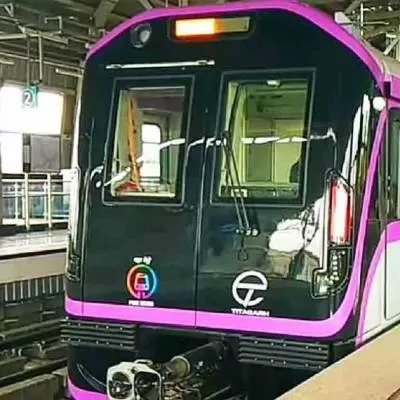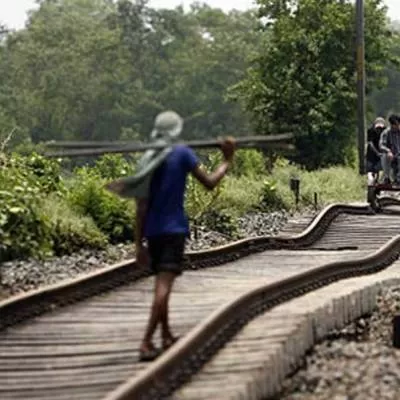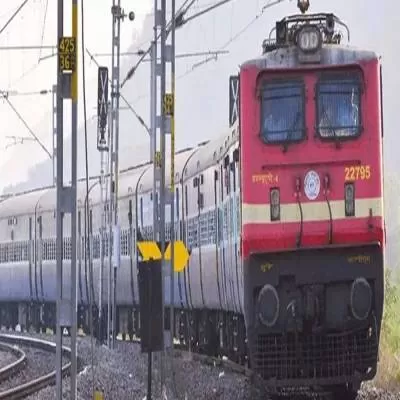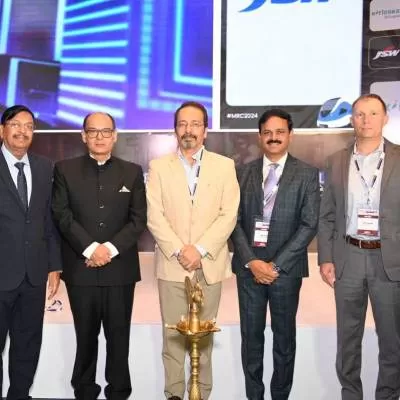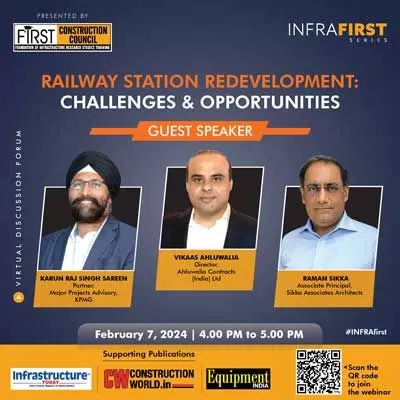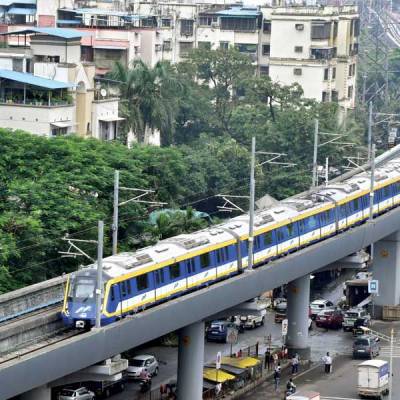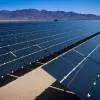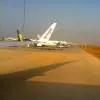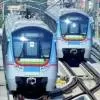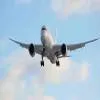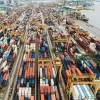- Home
- Infrastructure Transport
- RAILWAYS & METRO RAIL
- Routing Mumbai´s Metro

Routing Mumbai´s Metro
In 2006, the foundation stone was laid for Mumbai Metro Line 1; in June 2014, the city got its first metro line: The 11.4-km Versova-Andheri-Ghatkopar corridor. Achieving Line 1 was no cakewalk, with unavailability of land a prime reason for delay. ¨We learnt the hard way that it´s not so simple,¨ said Sanjay Sethi, Additional Metropolitan Commissioner and Managing Director, Mumbai Metro Rail Corporation, chief guest at the recent Tech Infra Projects Meet organised in Mumbai.
Building relations
The meet was organised by the US India Importers´ Council (USIIC) and The Robbins Company, USA, in association with US Commercial Service. With regard to the upcoming underground Mumbai Metro Line 3, MJ Rai, Chairman, USIIC, and Managing Director, Titan Sea & Air Services, said, ¨We thought the world´s best tunnel boring machine (TBM) technology, available with The Robbins Company, USA, should be introduced to people who will utilise it.¨
The evening began with Kapil Bhati, Managing Director, Robbins Tunnelling and Trenchless Technology (India), introducing contractors to the company. ¨Present in India since 2005, having executed the biggest TBM projects, i.e., 10-m diameter double shield hard rock machines, Robbins has been involved with the Delhi Metro and the Chennai Metro and Jaipur Metro in the pipeline.¨ What´s more, the company recently took over the entire operations for excavation of 750 m twin tunnels for the Bangalore Metro Rail Corporation.
Tunnelling through
With over 40 years of experience in the tunnel boring industry, Lok Home, President, The Robbins Company, USA, said, ¨What is amazing is the transition of the traffic, pollution and the differences a metro makes in a city.¨ Line 3 is a 32.5-km project, divided into seven different packages; the duration of the project is 54 months. In this project, about 94 per cent of the geology is hard rock. Another aspect is groundwater. ¨But we don´t think this will be a problematic water tunnel,¨ Home assured as he recommended Hard Rock TBMs. He elaborated, saying that single or double-shield TBMs have advance rates of 110 mm/min compared to earth pressure balance (EPB) TBMs that have an advance rate of 40 mm/min.
Metro opportunities
For his part, Sethi said, ¨In 2008, we did a comprehensive study for MMR, which recommended a metro system of about 450 km.¨ Metro Line 3 is about 32.5 km. And to achieve 450 km, the estimated timeframe is 2031 with investment of about $51 billion. Sethi confirmed that Metro 2, initially bid out on PPP, has been revised to be fully underground. He also revealed that the DPR for corridor two and four are completed and the projects likely to come up soon. For Line 3, while depot works have already started, the award for contract is now likely soon.
The US-India bond
Guest of honour for the evening was Martin Claessens, Commercial Officer, US Commercial Service, US Consul General Mumbai.
¨It is an honour to be here at this time in US-India relations,¨ he said. ¨PM Modi and President Obama have come up with a saying for the India-US partnership for the 21st century: Chal Saath Saath (together forward we go). There is a lot of US technology helping India grow and we would like to see a lot more of that.¨
The recently held Tech Infra Projects Meet in Mumbai highlighted opportunities in the Mumbai metro with a focus on tunnel boring technology. In 2006, the foundation stone was laid for Mumbai Metro Line 1; in June 2014, the city got its first metro line: The 11.4-km Versova-Andheri-Ghatkopar corridor. Achieving Line 1 was no cakewalk, with unavailability of land a prime reason for delay. ¨We learnt the hard way that it´s not so simple,¨ said Sanjay Sethi, Additional Metropolitan Commissioner and Managing Director, Mumbai Metro Rail Corporation, chief guest at the recent Tech Infra Projects Meet organised in Mumbai. Building relations The meet was organised by the US India Importers´ Council (USIIC) and The Robbins Company, USA, in association with US Commercial Service. With regard to the upcoming underground Mumbai Metro Line 3, MJ Rai, Chairman, USIIC, and Managing Director, Titan Sea & Air Services, said, ¨We thought the world´s best tunnel boring machine (TBM) technology, available with The Robbins Company, USA, should be introduced to people who will utilise it.¨ The evening began with Kapil Bhati, Managing Director, Robbins Tunnelling and Trenchless Technology (India), introducing contractors to the company. ¨Present in India since 2005, having executed the biggest TBM projects, i.e., 10-m diameter double shield hard rock machines, Robbins has been involved with the Delhi Metro and the Chennai Metro and Jaipur Metro in the pipeline.¨ What´s more, the company recently took over the entire operations for excavation of 750 m twin tunnels for the Bangalore Metro Rail Corporation. Tunnelling through With over 40 years of experience in the tunnel boring industry, Lok Home, President, The Robbins Company, USA, said, ¨What is amazing is the transition of the traffic, pollution and the differences a metro makes in a city.¨ Line 3 is a 32.5-km project, divided into seven different packages; the duration of the project is 54 months. In this project, about 94 per cent of the geology is hard rock. Another aspect is groundwater. ¨But we don´t think this will be a problematic water tunnel,¨ Home assured as he recommended Hard Rock TBMs. He elaborated, saying that single or double-shield TBMs have advance rates of 110 mm/min compared to earth pressure balance (EPB) TBMs that have an advance rate of 40 mm/min. Metro opportunities For his part, Sethi said, ¨In 2008, we did a comprehensive study for MMR, which recommended a metro system of about 450 km.¨ Metro Line 3 is about 32.5 km. And to achieve 450 km, the estimated timeframe is 2031 with investment of about $51 billion. Sethi confirmed that Metro 2, initially bid out on PPP, has been revised to be fully underground. He also revealed that the DPR for corridor two and four are completed and the projects likely to come up soon. For Line 3, while depot works have already started, the award for contract is now likely soon. The US-India bond Guest of honour for the evening was Martin Claessens, Commercial Officer, US Commercial Service, US Consul General Mumbai. ¨It is an honour to be here at this time in US-India relations,¨ he said. ¨PM Modi and President Obama have come up with a saying for the India-US partnership for the 21st century: Chal Saath Saath (together forward we go). There is a lot of US technology helping India grow and we would like to see a lot more of that.¨


